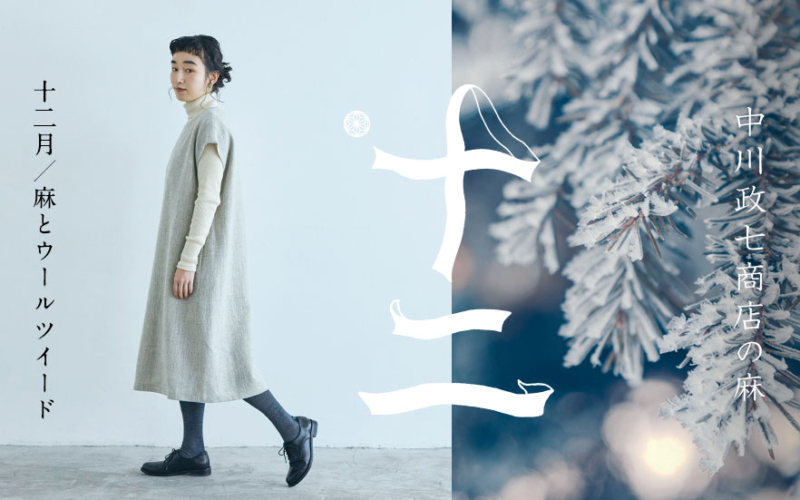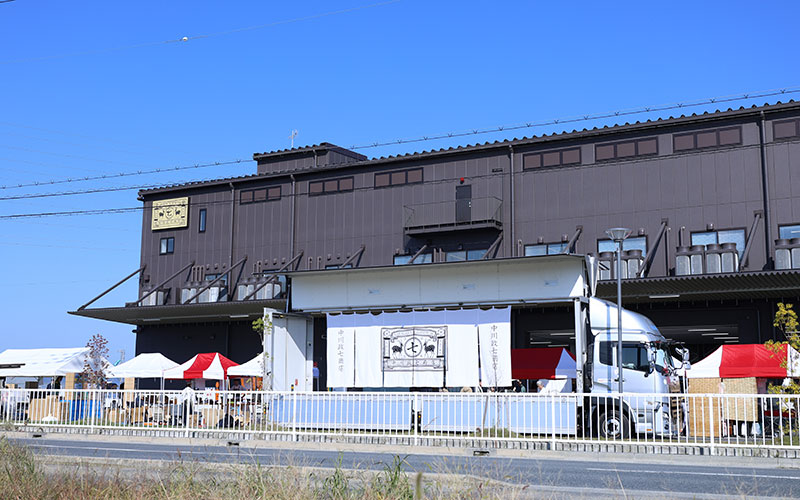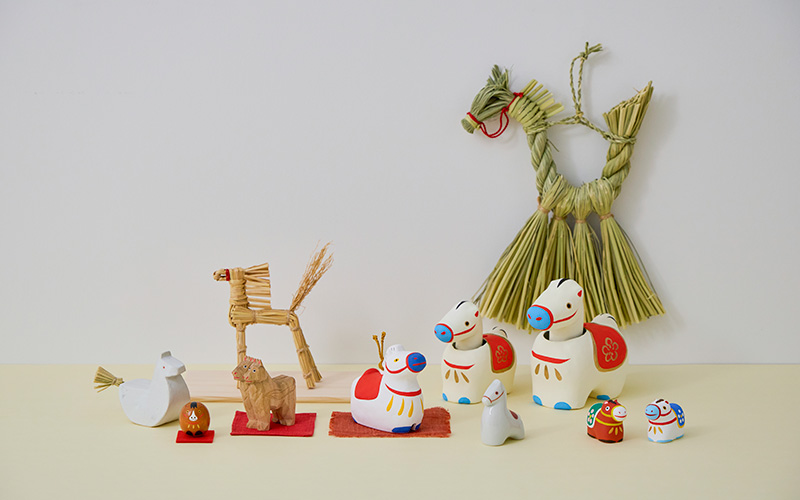Time travel within a walking distance Narazarashi, the most premium hemp fabric
Hi, I’m Kanako from SUNCHI editorial desk.
Like Setouchi area of quality lemons and olives, Oma in Aomori of the special tuna, even tools have each birth place which suits for the production by the natural environment. In those places, people come for a job and make a living, and cultures are consolidated. A number of production areas have been formed in that way in Japan. Denim representing Okayama Prefecture and Gold Leaf in Kanazawa Prefecture are famous examples. Textile for the clothes has been the necessary living item from the ancient. We traced the expensive hemp fabric “Narazarashi” in Japanese oldest capital of Nara.
There are places where preserve the appearance of Narazarashi as a big business such as in Nara Park where the deer rests in a relaxed manner and in the neighboring city of Prefectural government’s office. “Isuien Garden” is located in front of Todaiji-Temple. The scenic beauty consists of two parts designed in the two different time periods. One is the “Front Garden” which was made by the merchant of Shogun warrant, Dosei Kiyosumi in the early Edo period, seventeenth century along with his villa. Narazarashi was what Kiyosumi dealt.
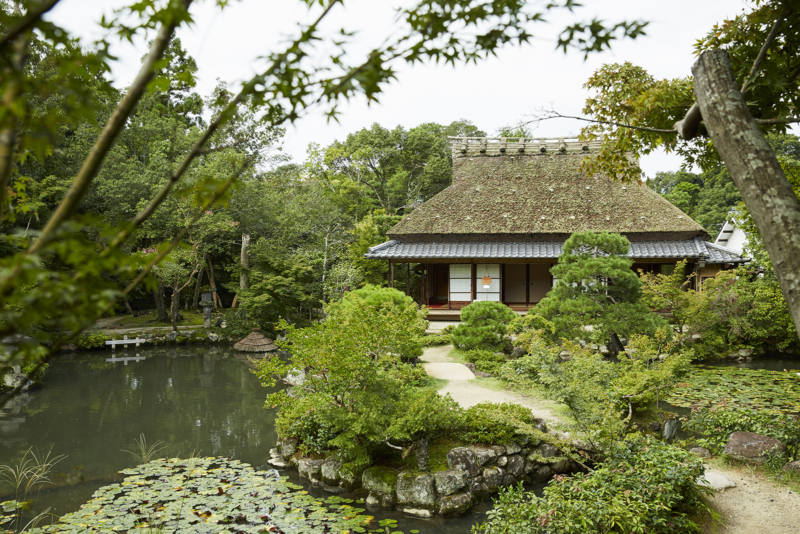
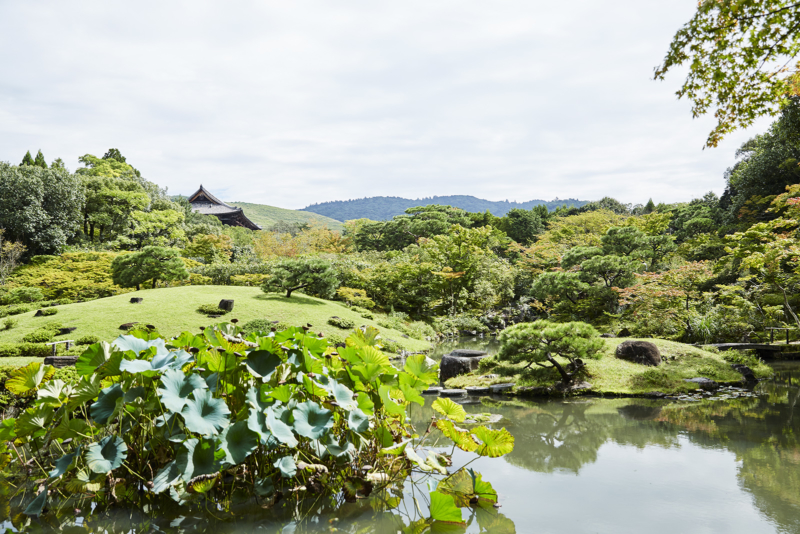
Narazarashi is the premium hemp fabric. It dates back its origin to Kamakura era, in around 13th century, and it has a record that it had been used for a “Kesa” or a robe worn by Buddhist priest. The oldest literature was in the late 16th century when Genshiro Kiyosumi succeeded in improvement of the method. He was the grandfather of Dosei Kiyosumi. In the first half of the 17th century, Narazarashi was authorized by Tokugawa Shogunate as Tokugawa warrant and given the stamp which allowed to trade. Narazarashi was mainly used for Samurai’s formal clothes and priest’s robe. Also, since Senno Rikyu described that the tea cloth had to be white and new, there seemed a demand as a tea cloth.
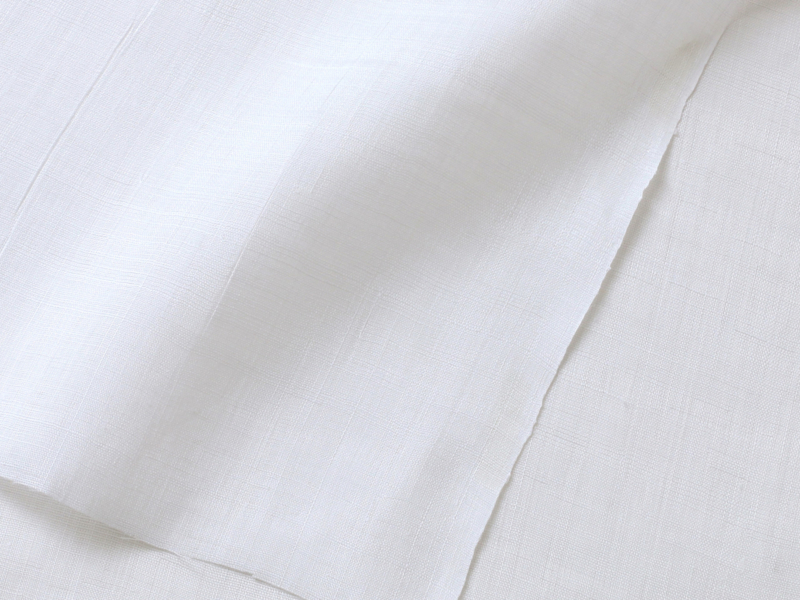
Isuien Garden is located by the affluent river named Yoshiki River and the cloth for Narazarashi was washed in this garden.
Walking along the garden, we’ll see remnants and designs of that time such as the water mill and the steppingstones imitating a grindstone used for making Narazarashi. A washing scene that we can guess in the park now, can be seen in the book named “Nanto nunosarashinoki” written in 1789.
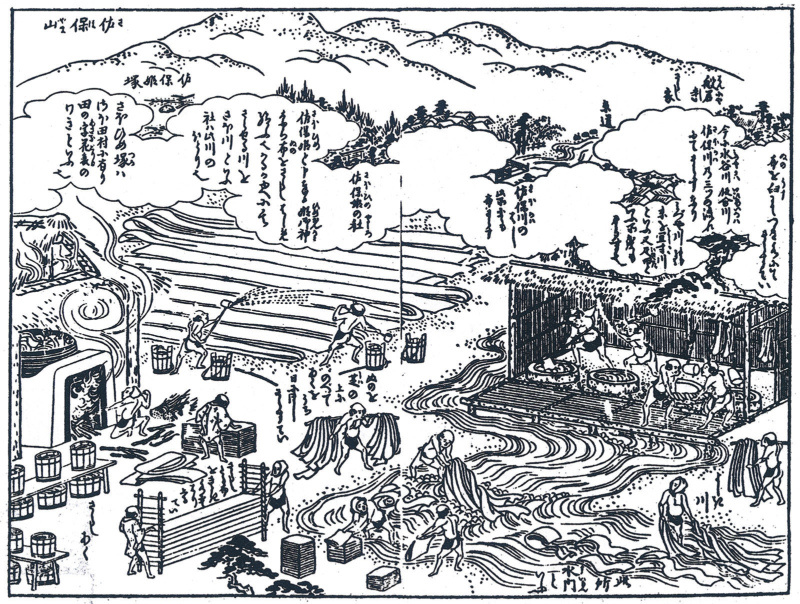
In the book published in 1754 named “Nihonsankaimeibutsuzukai” describing about the specialty and the popular place of each district, Narazarashi was praised for its good quality as below.
“The hemp traded in Nanto, or Nara is the best. A number of hemp is produced around Nanto, but Narazarashi is most evaluated as it’s dyed beautifully, it doesn’t cling to body, and it’s the water shedding. “
Where does this quality come from? The material of Narazarashi is hemp. “Choma” or ramie of robust hemp was used.
A thread for Narazarashi is made of a fiber of Choma and the hemp is woven with twisted warp and untwisted woof, and this weaving method is called “Hiranuno”. It takes a month to spin thread and at least 10 days for experienced weaver to weave 24 meter. It’s a stunning long procedure.
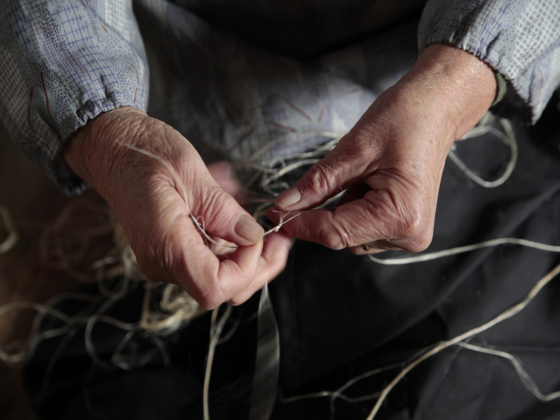
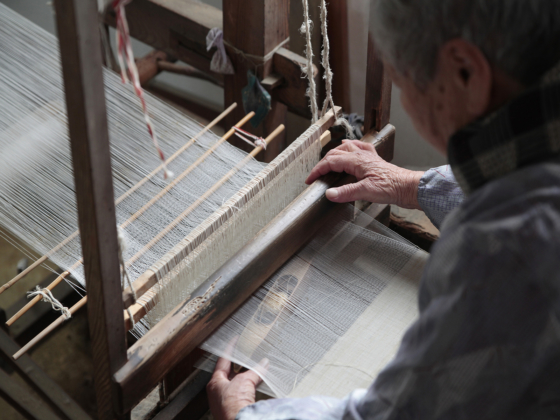
This robust fiber of Choma enables the feel of dryness, and the mixture of twisted and untwisted thread makes bleaching and coloring efficient, and thus Narazarashi had become highly reputed as the most premium.
Surprisingly, it’s said that the production amount of this labor and time consuming fabric had reached to 960,000 meter’s long during the later half of 17th century and the former half of the 18th century. Its prosperity of that time is described in “Seken Munazanyo” written by Saikaku Ihara. In the midst of the golden time, Nakagawa Masashichi Shoten was established in Ganriincho in Nara City close to Sarusawaike Pond in Nara Park in the year of 1716. Narazarashi is being made by the exact same method as was in Edo era, 300 years ago. The tools which had been used for making Narazarashi are displayed in “Yu Nakagawa flagship store sitting in the foundation place.
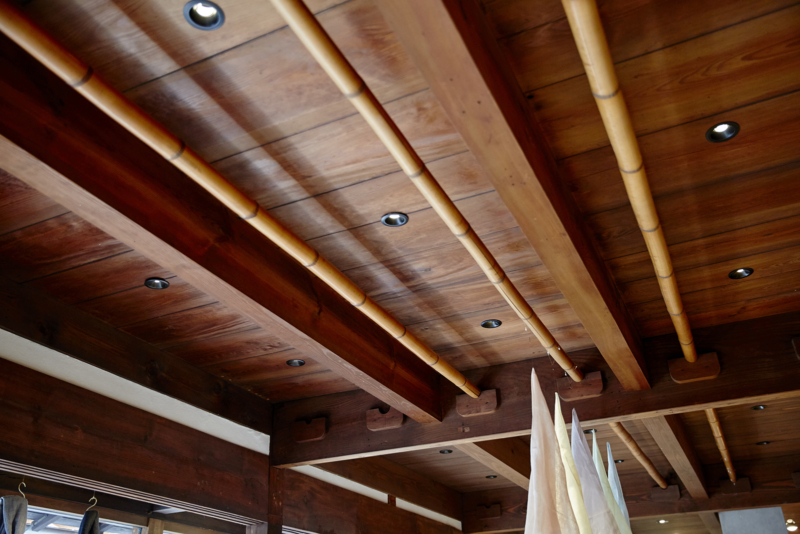
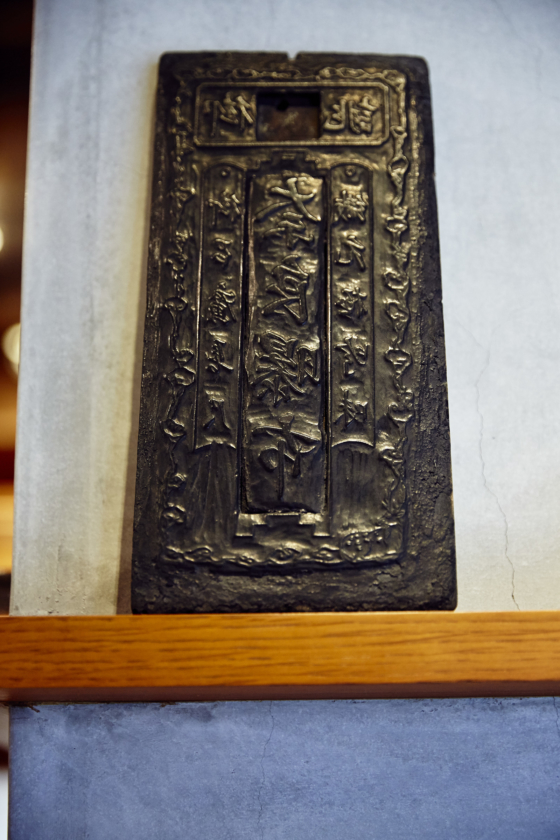
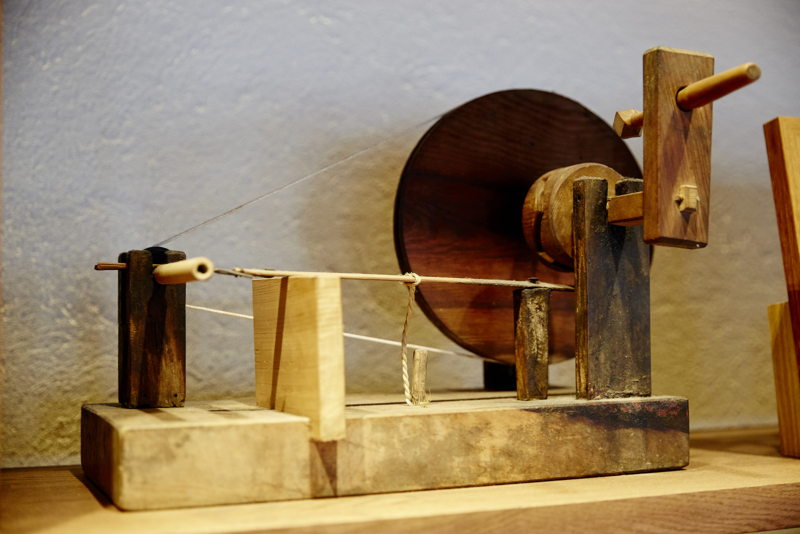
The bamboo poles were used for the inspection of the fabric. They hung the fabric over the poles and saw if there was a defection or dirt, and checked the width, the length and how closely it was woven. What was against the big pillar in the middle of the shop was a stamp which had been stamped on the wrapping material. The character “Narabakufu” is curved in reverse.
When Samurai era was over, the industry was fallen into a decline as Samurai were the best supply destination. In Taisho era, Nakagawa Masashichi Shoten had built its own factory and exhibited the linen handkerchief for Paris Expo, aiming for the revival of Narazarashi. In the beginning of Showa era, Nakagawa Masashichi Shoten made a breakthrough with its linen tea cloth and acquired the demand for a tea item. The technique and the reliable quality which have been kept in that way are now utilized for making the daily items such as pouches, bags, and clothes, and they are lined in their shops.
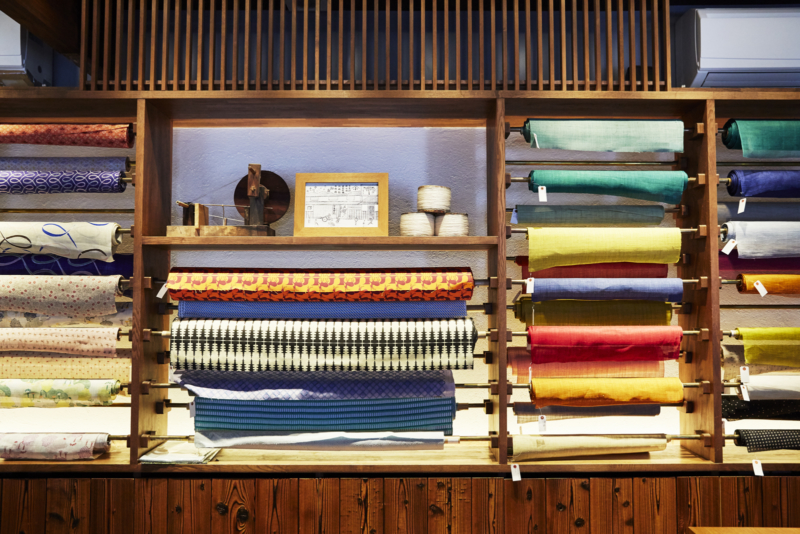
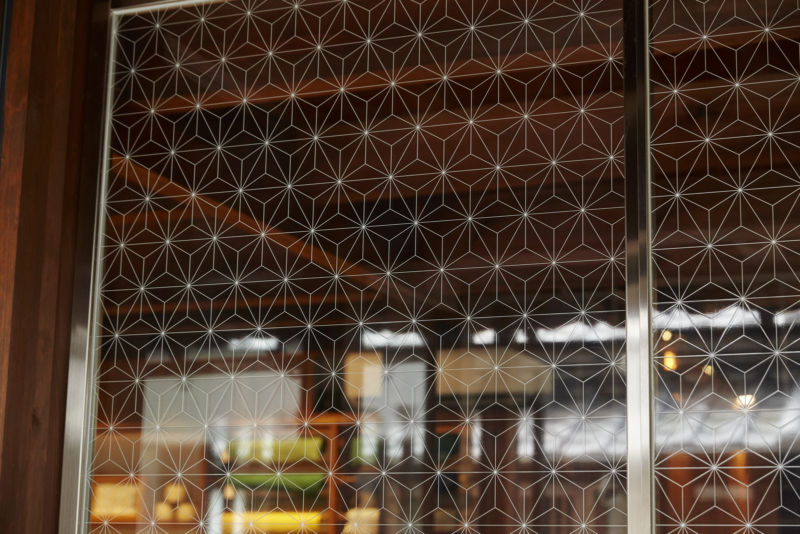
The excellent product which has been nurtured by the local is utilized by adjusting itself to the present, not by only preserving it.
Why don’t you let yourself go on a time travel by strolling in Isuien Garden or touching the fabric in the well-established shop? Just turn your thought to the past and the future of the specialty of Nanto.
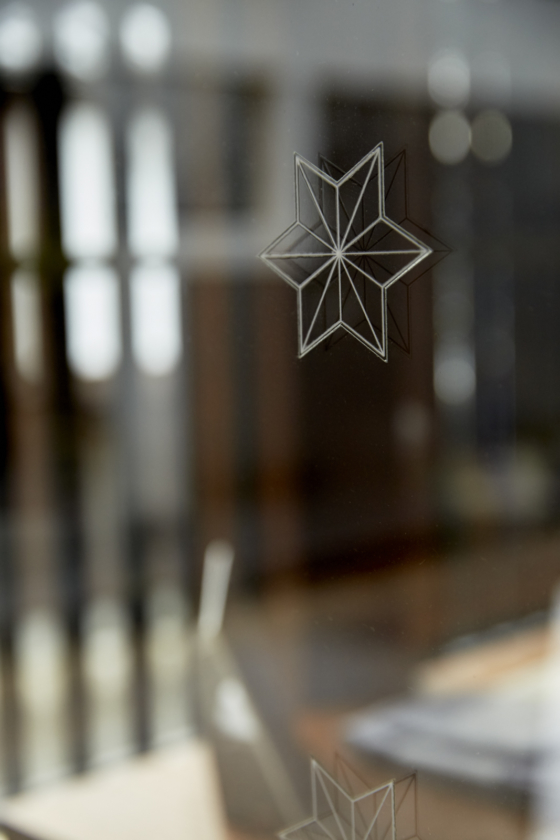
Isuien Garden
Address: 74 Suimoncho, Nara City
Phone: 0742-25-0781
http://www.isuien.or.jp/index.html
Yu Nakagawa The flagship shop
Address: 31-1 Ganriincho, Nara City, Nara Prefecture
Phone: 0742-22-1322
http://www.yu-nakagawa.co.jp/p/honten
Writer: Kanako Ojima
Photographer: Masashi Kimura




